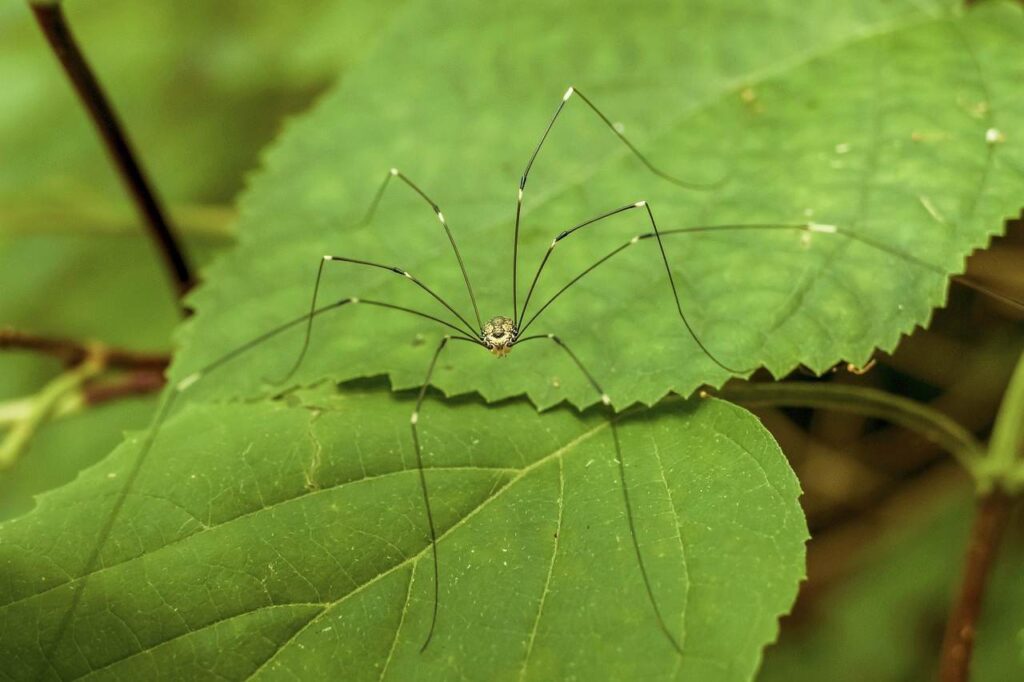If you’ve ever gone into your cellar, attic, or basement, perhaps to pull out old boxes in-between seasons, chances are you’ve run across a small tan or gray spider with a little body and pronounced long legs, called a cellar spider, or most commonly known as a daddy long-leg. Or, maybe you’ve had to brush away a few of their messy cobweb-like webs to access your storage.
Cellar spiders are very common throughout the U.S. and can mostly be found inside your property in the dark corners of garages, cellars, and crawl spaces where it is damp and humid. And though they do not pose an immediate threat, they can be a nuisance, especially for those who have a fear of spiders.
What Are Cellar Spiders?
Cellar spiders belong to a species of arthropods referred to as arachnids. They typically have a short or a long oval-shaped body of no more than 1/4 to 5/16 of an inch long and extremely long hairlike legs, which is what sets them apart from other spiders and what has also earned them the nickname, daddy long-legs.
Their disheveled, rather loosely constructed webs also differ from other spiders, and they are not sticky like most webs. Instead, their webs are uniquely designed to trap prey with its irregular pattern.
They also react differently when their web is disturbed. When something comes in contact with their web, they respond by rapidly shaking their bodies to make the web vibrate, which is why they are also called vibrating spiders. Some spiders will also vibrate other spiders’ webs to imitate the reaction of being trapped, so they can attract the host closer and attack it. They also feed on the prey and eggs of other spiders, including some venomous spiders like the black widow spider.
However, similar to other spiders, cellar spiders also have two body parts, eight legs, between six to eight eyes, and fangs.
Are Cellar Spiders Poisonous?
It is a common belief that daddy long-legs are not only poisonous but the most venomous of all spiders; however, even if this were true, their fangs are too small to puncture thick human skin, and their bites are too small to be potent.
Furthermore, there are no studies that show that cellar spiders have ever harmed a human. Therefore, they do not pose a serious threat. However, their presence and constant web making can be aggravating.
How to Treat Cellar Spiders
Since cellar spiders prefer dark, humid places, it is best to keep the humidity low in cellars, basements, and crawl spaces, etc., which can be done by placing a humidifier in these areas.
Any gaps, cracks, and openings around your property’s foundation should also be sealed to help keep cellar spiders out. You may also consider switching your exterior lighting to yellow lighting to avoid attracting spiders, as well as insects, which cellar spiders like to feed on.
When storing items in the basement, garage, attic, or other dark, humid places, be sure to store them tightly, such as in a seal-tight plastic storage container, to prevent spiders from making their way onto the items or inside the container where they can be transported into your property later.
Storing woodpiles away from your building can also deter spiders from entering your property. You should also inspect any wood before bringing it into your property to be sure there are no spiders on it, which can also bring cellar spiders inside.
A professional can also assist with you with keeping cellar spiders at bay. The technician can inspect your property for entryways, egg sacs, and webs and even remove the webs and egg sacs, especially in hard to reach areas, to help rid your home of spiders. The technician can also treat around the perimeter of your property to help create a barrier to deter spiders from entering and then return seasonally to help keep them out.

